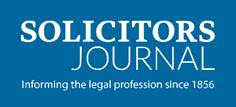If you’re a leaseholder of a flat in a building, you might have heard about the Right to Manage leasehold (RTM). But what exactly is it, and how can it benefit you? In this comprehensive guide, we’ll break down the details, making it easy to understand in case you decide to use this right.
What is Right to Manage?
The Right to Manage is a law that lets leaseholders manage their building themselves. It’s all about giving leaseholders more control over how things are run. They can choose who does the maintenance, how much to charge for services and pick the person or company that manages the building.
Since it was introduced in 2002, many flat owners have used it to gain more control. Allowing them to make their own decisions about their building, which encourages pride in their homes and promotes a feeling of community, instead of just accepting what others decide.
How to exercise your Right to Manage
If you’re thinking about getting started with a Right to Manage leasehold, the following steps will help you:
Check your eligibility
First, check if you can use RTM. You need most flats in your building, over two-thirds, to be owned by people with long leases, more than 21 years. Also, less than a quarter of your building should be used for non-residential purposes. Make sure that you confirm these details, as they are important for your RTM eligibility.
Forming an RTM company
Your next move is to set up an RTM company. This is a legal body that the leaseholders will use to exercise their Right to Manage. Creating this company is a formal process and often requires legal advice to ensure compliance with all regulations.
Gather support
You need support from at least half of the eligible leaseholders in your building. So, it’s important to talk to your neighbours and get them on board. This step might involve meetings or discussions to explain the benefits of RTM and why it will benefit them to join.
Serve a notice
With enough leaseholders backing you, your RTM company will send a legal notice to the building’s freeholder. This notice tells them about your plan to take over the building’s management. The notice must be prepared carefully as it’s a formal document that starts the RTM process.
Wait for the response
After you serve the notice, the freeholder has a choice to accept or contest it. If they don’t answer, the law takes it as an acceptance of your notice. In case of a dispute, you might need to prepare for further legal steps or negotiations.
Benefits of Right to Manage
Exercising a Right to Manage leasehold can be a very smart decision. Here’s why it’s beneficial:
You’re in charge of decisions
You get to make important choices about your building. This includes setting how much money is spent each year and picking the companies that provide services like cleaning and repairs. It means you have a direct say in what happens in your home environment.
Keep your building well-maintained
When you’re in control, you can make sure that all the maintenance and repair work is done well and on time. This usually means your building will look and feel better for its residents.
Save money
Being in charge of managing the building can often be cheaper. You can find ways to reduce costs, like choosing more affordable service providers or cutting unnecessary expenses. This can save money for every resident in the building.
Increased property value
Well-managed properties often retain or increase their value over time. RTM can contribute to this by ensuring that the property is well-maintained and financially sound.
Taking charge of your home with Osbourne Pinner
Knowledge is power when navigating the complexities of a Right to Manage leasehold. That’s where Osbourne Pinner comes in. Our team at is equipped with the expertise and experience to guide you through every step of this journey. Whether it’s understanding the process, forming an RTM company, or dealing with legalities, we’re here to ensure a smooth and successful transition to self-management.
Contact Osbourne Pinner today on 0203 983 5080, email [email protected] or submit this contact form to find out how we can help with landlord and tenants services.




















